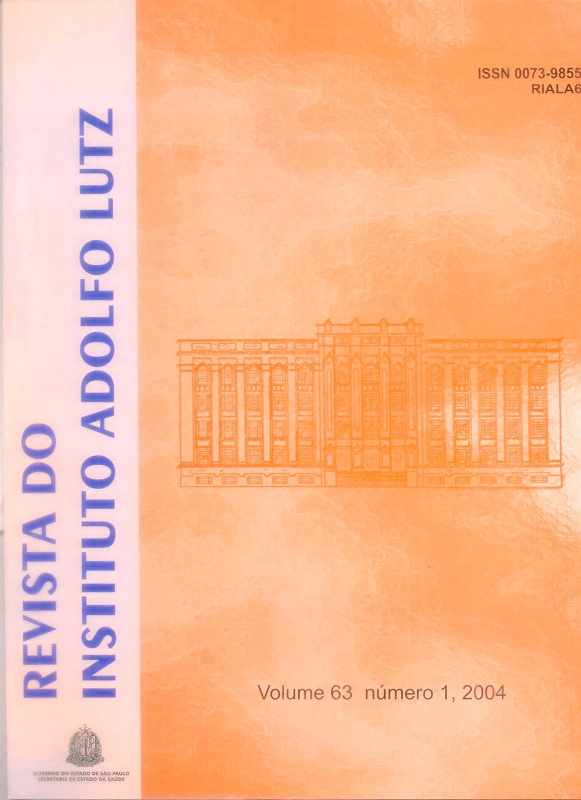Resumo
A associação da citologia de base liquida (BL) e o teste de Captura de Híbridos II (HC2) para DNA HPV poderão otimizar o diagnóstico citológico, sobretudo os de origem indeterminada (ASCUS/AGUS). Avaliamos as amostras colhidas com o sistema DNA-CITOLIQ® (DIGENE-Brasil) para citologia de BL e HC2, de pacientes atendidas no Hospital Leonor Mendes de Barros. Foram realizados 842 exames de citologia de BL e HC2, onde 64 (7,6%) amostras apresentaram atipias de significado indeterminado (ASCUS/AGUS) de citologia na BL. O HC2 para DNA HPV de alto risco foi positiva em 16 (25%) amostras de ASCUS e quatro (6,2%) de atipia glandular (AGUS). De 748 amostras, 88,8% foram citologicamente negativas e destas 97 (11,5%) foram positivas para HPV de alto risco. Essas alterações estão associadas à infecção pelo HPV e , portanto, colocam a paciente em um grupo com conduta diferenciada da população normal. Adicionalmente, os casos com resultados negativos no exame citológico, que nos testes de DNA HPV foram positivos, demonstraram a elevada sensibilidade das técnicas biomoleculares em relação à morfologia. Concluímos que a citologia de BL associada ao HC2, pode melhorar a sensibilidade do método de Papanicolaou.
Referências
1. Bernstein, SJ; Sanchez-Ramos, L; Ndubisi, B. Liquid-based cervical cytology smear study and conventional papanicolaou smears: A metaanalysis of prospective studies comparing cytologic diagnosis and sample adequacy. Am J Obstet Gynecol , 185: 308-317, 2001.
2. Biscotti, CV et al. Thin-layer Pap test vs. Conventioanl pap smear. Analysis of 400 split-samples. J Reprod Med , 47: 9-13, 2002.
3. Bishop JW. Comparison of the CytoRich system with conventional cervical cytology. Preliminary data on 2032 cases from a clinical trial site. 41: 15-23, 1997.
4. Bishop, JW et al. Multicenter masked evaluation of Autocyte PREP thin layer with matched conventional smears. Including initial biopsy results. Acta cytol ,42: 189-197, 1998.
5. Bolick, DR; Hellman, DJ. Laboratory implementation and efficacy assessment of the ThinPrep cervical cancer screening system. Acta Cytol, 42: 209-213, 1998.
6. Castle, PE et al. Absolute risk of a subsequent abnormal Pap among oncogenic human papillomavirus DNA-positive, cytologically negative women. Cancer, 95: 2145-2151, 2002.
7. Cohn, DE; Herzog, TJ New innovations in cervical cancer screening. Gynecologic Surgery and Oncology , 44: 538-549, 2001.
8. FDA News. FDA approves expanded use of HPV test. http://www.fda.gov/bbs/topics/news/2003/new00890.html.
9. Ferenczy, A; Franco, E. Cervical-cancer screening beyond the year 2000. Lancet-Oncology , 2: 27-32, 2001.
10. Hessling JI et al. Effectiveness of thin layer preparations vs. Conventional pap smear in a blinded, split-sample study. Extended cytologic evaluation. J Reprod Med , 46: 880-886, 2001.
11. Manos, MM et al. Identifying women with cervical neoplasia using human papillomavirus DNA testing for equivocal Papanicolaou results. JAMA, 281: 1605-1610, 1999.
12. Marino, JF; Fremont-Smith, M. Direct-to-vial experience with AutoCyte PREP in a small New England regional cytology practice. J Reprod Med, 46: 353-358, 2001.
13. McCrory, D et al. Evaluation of cervical cytology. Evidence Report/Technology Assessment Number 5. Duke University, 290-97-0014; Agency for Health Care Policy and Research, 99-E010. Rockville, MD: Agency for Health Care Policy and Research, 1999.
14. Minge, L et al. Autocyte Prep System vs conventional cervical cytology. Comparison based on 2,156 cases. J Reprod Med, 45: 179-184, 2000.
15. Monsonego, J et al. Liquid-based cytology for primary cervical cancer screening: a multi-center study. Br J Cancer, 84: 360-366, 2001.
16. Petry, KU et al. Inclusion of HPV testing in routine cervical cancer screening for women above 29 years in Germany: results for 8,466 patients. Br J Cancer, 88: 1570-1577, 2003.
17. Saslow, D et al. American cancer society guideline for the early detection of cervical neoplasia and cancer. CA Cancer J Clin , 52: 342-362, 2002.
18. Solomon, D et al. The 2001 Bethesda System. Terminology for reporting results of cervical cytology. JAMA , 287: 2114-2119, 2002.
19. Sulik, SM et al. Are flui-based cytologies superior to the conventional Papanicolaou test?. A systematic review. J Fam Pract , 50: 1040-1046, 2001.
20. Quddus, MR et al. Utility of HPV DNA Detection in thin-layer, liquidbased tests with atypical squamous metaplasia. Acta Cytol, 46: 808-812, 2002.
21. Vassilakos, P et al. CytoRich liquid-based cervical cytologic test. Screening results in a routine cytopathology service. Acta Cytol, 42: 198-202, 1998.
22. Vassilakos, P et al. Biopsy-based comparison of liquid-based, thin layer preparations to conventional Pap smears. J Reprod Med, 45: 11-16, 2000.
23. Wright Jr, TC et al. 2001 Consensus guidelines for the management of women with cervical cytological abnormalities. JAMA , 287: 2120-2129, 2000.

Este trabalho está licenciado sob uma licença Creative Commons Attribution 4.0 International License.
Copyright (c) 2004 Maria Lúcia Utagawa, Sônia Maria Miranda Pereira, Adhemar Longatto Filho, Cecília Roteli- Martins, Luciana Silva Aguiar, Janaína Érika Pittoli, Celso Di Loreto, Marina Yoshiê Sakamoto Maeda, Laura Martins, Janice O. Galvane, Kari Syrjänen
